NEAR worked with the NASA Engineering & Safety Center (NESC) to demonstrate the viability of using grid fins to augment the stability of the Orion launch abort vehicle (LAV) during transonic abort.
NEAR used a combination of existing experimental data and computational fluid dynamics (CFD) to developed the grid fin design.
The resulting design was successfully demonstrated on a 6% LAV model at the NASA Ames Research Center (ARC) 11x11-foot transonic wind tunnel (from Mach 0.5 through 1.3) and the 9x7-foot supersonic wind tunnel (from Mach 1.6 through 2.5), see Figure 1.
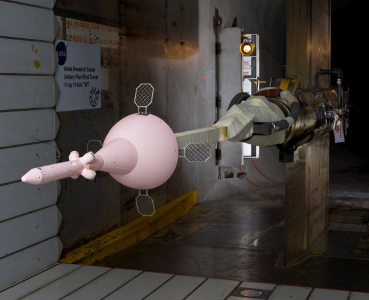
Figure 1.
Photograph of the 6%-scale Orion launch abort vehicle with swept grid fins in the NASA ARC 11x11-foot transonic wind tunnel.
Both swept and unswept grid fins were investigated.
Swept fins further improve LAV stability by increasing the distance from the vehicle's center of gravity to the fin's center of pressure, as shown in Figure 2.
Because this distance is intrinsically short for the Orion LAV, the relatively small aft movement in center of pressure provided by the swept fins yielded a measurable increase in pitching moment.
The swept fins were fabricated with a 22.5° aft sweep angle on the frame and internal lattice to maintain the same frontal projection as the unswept fins, as shown in Figure 3.
The full-scale area for each fin (defined to be 0.9*width*height) was 3,030 in^2 which can be compared to the full-scale heat shield area of 30,800 in^2.
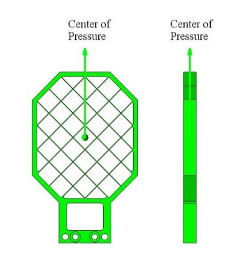
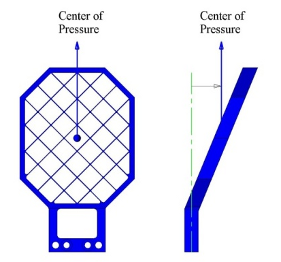
Figure 2.
Center-of-pressure location for an unswept fin (left) and a swept fin (right).
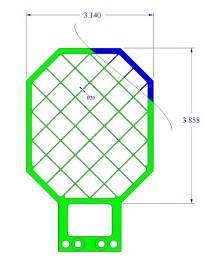
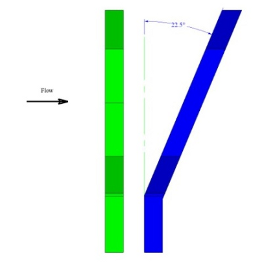
Figure 3.
Streamwise (left) and cross-stream (right) views of the 6%-scale unswept and swept fins.
A summary of conclusions derived from the transonic and supersonic wind tunnel data includes the following:
Both unswept and swept grid fins provided significant improvements in pitch stability as compared to the baseline vehicle, Figure 4.
The swept grid fins typically provided improved pitch stability as compared to the unswept fins.
The relative benefit of the swept fins over the unswept fins diminished as the Mach number was increased.
Despite initial concerns that fin performance would degrade during transonic conditions, there was little observed variation in fin performance with Mach number, Figure 5.
There was no significant difference in aerodynamic performance with the fins in the + orientation versus the x orientation.
Based on data that could be collected with the abort motors on, there was no significant degradation in grid fin performance due to the abort motor plumes.
The grid fin's ability to perform consistently over a wide range of operating conditions provides a robust solution for stabilizing the Orion LAV.
A grid fin aerodynamic database was generated and is available under limited distribution.
For this effort, Daniel Pruzan (Vice-President/Director of Engineering at NEAR) received a 2011 NESC Leadership Award.
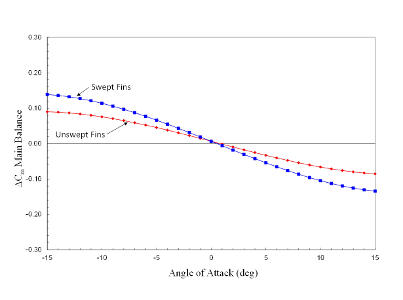
Figure 4.
Pitching moment coefficient increment about the MRC for the vehicle with unswept and swept grid fins in the + orientation at Mach 0.5 with the abort motors off.
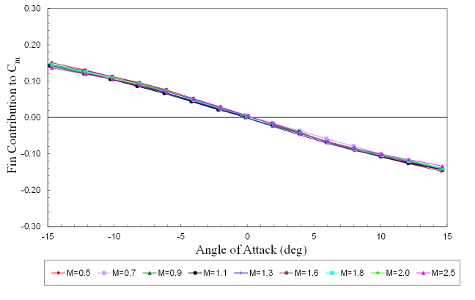
Figure 5.
Mach number effect on pitching moment coefficient contribution from all four swept grid fins (about the vehicle's moment reference center) as measured by the individual fin balances with the abort motors off.





